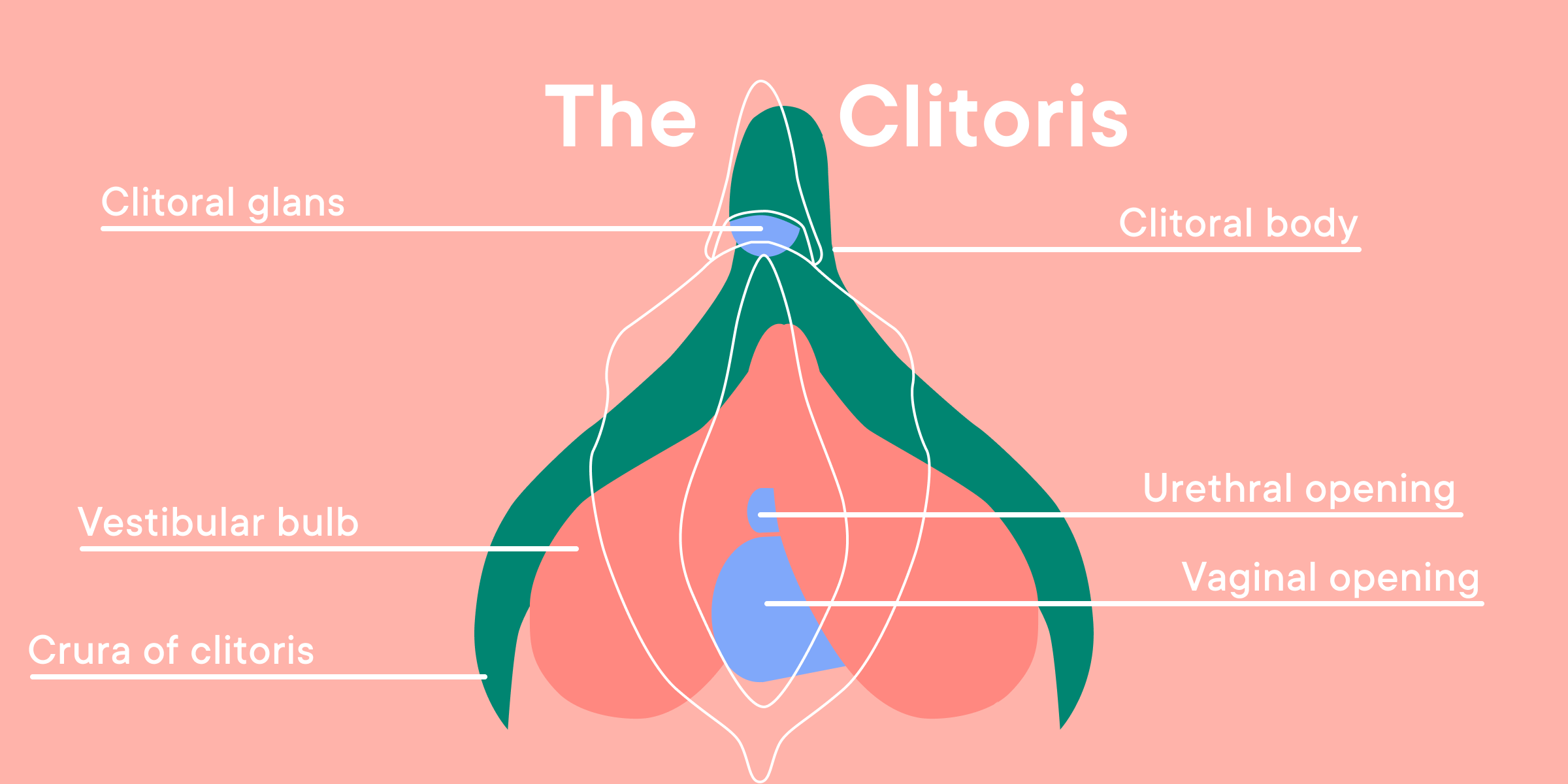Photography by Natalie Dodd. Art Direction by Marta Pucci.
A beginner’s guide to lesbian sex
You don’t have to be a lesbian to enjoy non-reproductive sex.

Since the US Supreme Court overturned Roe v Wade, voices across the internet called for women to stop having sex with men for fear of becoming pregnant and not being in control of the choices that follow.
Actress, Alyssa Milano, known for kicking off the #MeToo conversation online, tweeted: "Our reproductive rights are being erased. Until women have legal control over our own bodies we just cannot risk pregnancy. JOIN ME by not having sex until we get bodily autonomy back. I’m calling for a #SexStrike. Pass it on."
While Milano’s call for a sex strike was an understandable response to the rollback of reproductive rights, her tweet makes the assumption that all sex is heterosexual, unprotected and therefore fundamentally related to pregnancy.
LGBTQIA+ folks enjoy a wide variety of mostly non-reproductive sexual practices that have historically been excluded from dominant media narratives.
Often seen as taboo or even perverse, lesbian sex in particular is still frequently left out of the picture beyond ‘adult content’ developed for a mostly male audience. I think it’s time to give it the attention it deserves.
This guide focuses on beginner tips for women and people with vulvas who want to share sexual pleasure with one another. Regardless of your orientation, exploring non-reproductive sex with your partner can be liberating as you discover what gives you the most pleasure.
Before we start, regardless of what kind of sex you’re having, it’s important to have full and expressed consent and to ensure you and your sexual partner(s) are physically and emotionally safe throughout.
Getting started
So, let's begin. Kissing each other’s lips, caressing each other’s bodies, and squeezing breasts, nipples, and buttocks, may all be pleasurable and easy-going ways to start out. As with all forms of sex, foreplay is important and may include grinding or rubbing your bodies together with or without clothes.
Hips and thighs are the unsung heroes of this game. Dial things up by rubbing your vulva on the thighs or hips of your partner to stimulate your own arousal, encourage your partner to do the same to you, or use your hips or thighs to rub against your partner’s vulva. This is called tribbing and it isn’t everyone’s jam, but it can be an intimate way to get the juices flowing, so to speak.
Let’s move on to the clitoris
Orgasms for people with vulvas are still viewed as mysterious and contentious in popular media and conversation. This is partly because women’s (real, unpolished) pleasure tends to be underrepresented in media and pornography (1), but also because there are many different ways a person with a vulva can achieve an orgasm. One of the most common ways to arouse the vulva is through clitoral stimulation. So, what is the clitoris and how can we find it?
Most of us are familiar with the outer clitoris; the clitoral hood (glans clitoris), which is the pea sized nub at the top of the vulva. The glans contains the highest concentration of nerve endings, so it’s a significant source of sensitivity (2). Stimulate both the inner and outer clitoris to maximize pleasure. To learn more, check out our article about clitoral stimulation.

To stimulate the inner clitoris, start by massaging the entire vulva. Press your palm above the outer clit and use your fingers to gently massage the inner and outer labias. This will stimulate blood flow and arousal of the inner clitoris’ erectile tissue (3).
To stimulate the outer clitoris, you can use your fingers, mouth, tongue, toys and more. Some people desire very light and delicate touch, while others may prefer the intensity of a vibrator or vigorous rubbing—communication is key. You can use your fingers or tongue to stroke or lick the outer clitoris and create gentle circular movements around it as a starting point for stimulation.
For some people, clitoral stimulation provides enough pleasure. For others, clitoral stimulation is too intense to be pleasurable; either way, if you’re exploring, it’s a good place to start.
Next stop, Penetration Station: Fingers, fists, and toys
Particularly if you’re used to penetrative sex (with a penis or anything else), this does not rule it out. Penetration of the vagina and anus can take the form of fingering or fisting and may include the use of toys such as dildos, vibrators, and strap-ons.
Fingers
Fingering involves one or more fingers being inserted inside the vagina or anus. To finger the vagina, start with one or two digit(s), usually the pointer and/or middle finger, and use these fingers to slowly part the labia minora and slip into the vagina. Ideally, the vagina should be wet with relaxed muscles, but if not, check-in with your partner and consider using lube to ensure the finger(s) can enter the vagina without too much dry rubbing and resistance. After inserting the finger(s), you can move it/them around in various ways, such as circular motions or ‘in-and-out’ motions. When in doubt, ask your partner what they find more pleasurable. After inserting one or two fingers, the vagina may be relaxed and open enough to receive more fingers.
Fists
Fisting is an advanced form of penetration that involves using fingers or toys to slowly stretch the walls of the vagina or anus to eventually accommodate a fist. After the vagina is thoroughly lubricated and relaxed, you can explore fisting by slowly increasing the number of fingers that are inside the vagina until the fist can slip inside with relative ease. After your fist has slid inside the vagina, your partner may desire for you to pump your fist in and out, open and close your hand while inside, or keep your fist still.
The bottom line: be slow, check-in, and use lube.
Toys
Dildos, vibrators, and g-spot stimulators are just a few of the toys designed to penetrate the vagina or anus. If your toys are being shared between multiple partners, be sure to use fresh condoms on the toys to prevent the spread of infections. A common go-to toy in lesbian sex is the strap-on. Strap-on sex involves wearing a harness that typically loops around the lower hips and upper thighs to secure a dildo on top of the vulva. With the dildo strapped onto the body like a penis, the person wearing the strap-on can penetrate the vagina or anus of their sexual partner(s). To get the most out of strap-on sex, make sure the dildo and harness fit securely and use lube.
So, what about scissoring?
When people think about lesbian sex, scissoring tends to come to mind. Scissoring involves rubbing the vulvas together to stimulate pleasure. This can be a rather challenging and athletic endeavor, but it doesn’t have to be. As always, communication is key, so trying out different positions and discussing what is and is not comfortable is the most important step towards a successful scissoring session. This is not usually a position that beginners choose because it takes time and familiarity with each other’s bodies.
When do we finish?
Unlike heterosexual practices which tend to end when the person with a penis reaches orgasm, lesbian sex does not have a clear ending. Reaching orgasm is not always the goal or end point of lesbian sex. Some people can have multiple orgasms and some don’t orgasm at all. The point is to provide pleasure and connection, and orgasm may or may not be a part of this process. Lesbian sex ends whenever you and your partner(s) feel ready to stop.
To bring it back to the start, while our reproductive rights are being threatened, our pleasure doesn’t have to be. We can derive pleasure from much more than the kind of sex that may lead to pregnancy.
